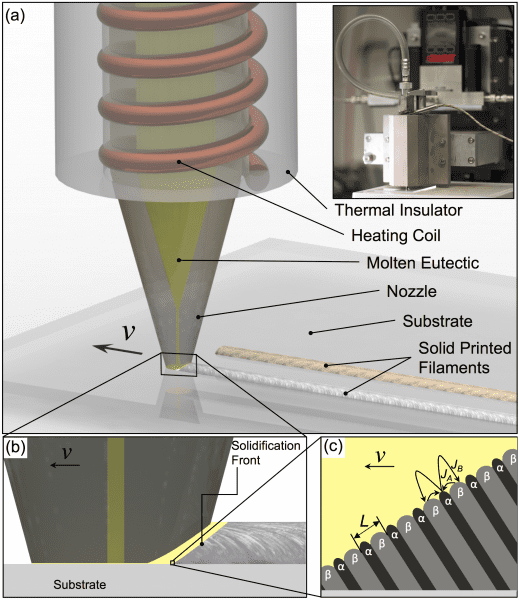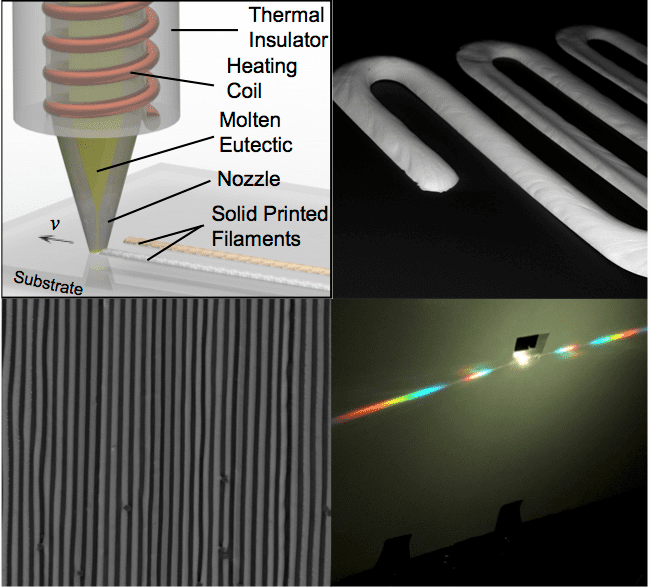The ability to rapidly fabricate materials with controlled periodicity on length scales near the wavelength of visible light is important for example in optical devices, cloaking, and beam shaping. Directional solidification of eutectic materials is an approach used for fabricating optical devices. Upon cooling from the molten state, the materials self organize into lamellar, rod‐like, or other periodic motifs that often resemble lithographically fabricated photonics or metamaterials, and sometimes exhibit structures that give rise to a localized surface plasmon resonance. However, until now scant attention has been given to simultaneously patterning and directionally solidifying eutectic materials.
Now, Jennifer A. Lewis and colleagues from Harvard University, the University of Michigan, the University of Illinois, and the University of Waterloo, Canada, report in Advanced Materials a new process for creating mesoscale eutectic architectures, known as high operating temperature direct ink writing (HOT‐DIW). Unlike other methods that control directional solidification, HOT‐DIW also enables direct patterning of eutectic materials enabling the printing of a molten eutectic ink composed of a silver chloride (AgCl)‐potassium chloride (KCl) onto a glass substrate in air under ambient conditions.
The molten ink consists of a low viscosity (≈2–3 mPa s), Newtonian fluid that undergoes directional solidification when cooled below its eutectic temperature (TE, which is around 320 °C) upon contact with the room temperature substrate. The AgCl‐KCl ink flows through a graphite nozzle that is locally heated to 400 °C (i.e., Tnozzle > TE; see Figure). By controlling the printing temperature and speed mesoscale eutectic AgCl‐KCl architectures composed of lamellar features oriented along the printing direction can be produced, whose periodic spacing can be systematically varied between approximately 100 nm and 2 μm, which enables the manipulation of light in the visible and infrared range.

HOT-DIW of molten eutectic inks. a) Overview of printing system and list of components (main) with photograph of system (inset). b) Detail side view schematic of printing process showing the solidification front following the HOT nozzle. c) Microscale schematic of solidification front showing solid–liquid interface and the lamellar growth during the printing process.

















